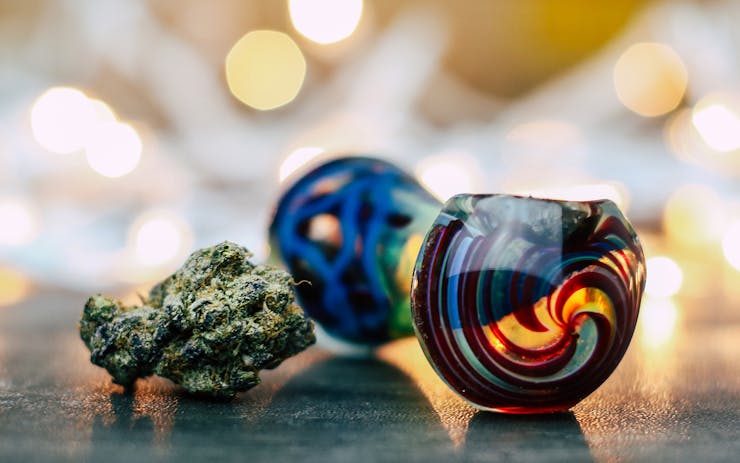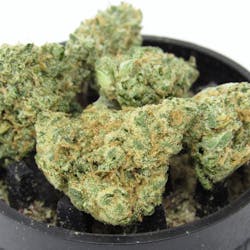Ask a dozen smokers what their favorite strain is, and you may receive a dozen different answers. Some prefer their high to be mellow, others like it buzzy, some want to feel it in their body, and others yet, in their head. There are a lot of factors that go into personal preferences when it comes to enjoying cannabis, but there are also many factors outside of simple likes that can affect your high.
By understanding the circumstances that can affect your high, you can empower yourself to have better experiences with a variety of strains and narrow down what works best for you.
Here are seven factors that affect your cannabis high.
Set & setting
Your environment plays a crucial role in the effect of your cannabis high and should not be taken lightly. Sometimes, if you smoke the same strain on two different days, you can have very different experiences.
Next time this happens, ask yourself—what was your mood and environment like before you smoked? Were you relaxed, happy, comfortable? Tense, anxious, or uneasy? At ease with the people in your company? Out in nature, or in a crowd?
Different scenarios can wildly affect your high. It’s important to consider your comfort level before indulging. Perhaps you know that getting high before you have to enter a stuffy waiting room will make you feel anxious, or maybe you know the best time for you to indulge is right before bed.
By being aware of your surroundings, you can figure out what set and setting work best for you, and better prepare yourself for enjoying the best possible cannabis high.
Delivery method
Smoking, vaping, and eating edibles may all be ways to ingest cannabis, but every delivery method comes with its own variables. Eating a pot brownie and hitting a vape will, generally speaking, affect you differently. Your body processes cannabis from each method differently, and the amount you consume usually differs between methods. On top of that, the duration of a high with edibles can be much longer, and the effects are often reported as stronger.
It’s also easier to control your dose with some methods more than others—vaping for example, as opposed to eating an edible. Additionally, you can get a more potent hit from dabbing oil than from puffing on a joint, and it’s easier to visualize how much you’re consuming with a joint than with a vape. All of these factors can play a role, affecting the quality and length of your cannabis high.
Shop highly rated dispensaries near you
Showing you dispensaries nearAs a result, it’s important to know your own limits with each individual method. Just because you can smoke a blunt every evening doesn’t necessarily mean you’ll enjoy half a pot brownie.
Dose
Dosing can be tricky, especially when indulging in edibles or a new strain. Starting low and going slow is essential.
Dosing may in fact be the most important factor to take into account when considering what will affect your high. Too little and you may feel like you shouldn’t have even bothered; too much and you may wind up sunk in the couch waiting for the high to wear off while the sound of the neighbor’s lawn mower freaks you out (I’ve been there too).
Hitting that sweet spot, and knowing what your sweet spot is, can make a world of a difference when enjoying cannabis.
Cannabinoid profile
Currently, the cannabinoid profile of a strain is one of the best and most accessible ways to determine how a high will affect you. For example, some people really enjoy the effects of cannabis’ most famous cannabinoid, THC, while others find its effects too stimulating or may have bad reactions from it, like anxiety.
There are other cannabinoids to consider as well, such as CBD and more. Cannabinoid profiles can be diverse and vary widely from strain to strain, but they can also be a powerful tool in assessing how a strain will affect your high.
But it’s necessary to first know how each cannabinoid makes you feel, and this usually requires some experimenting. Once you know which ones work best for you, knowing the composition of a strain will put the power in your hands and will allow you to have the type of high you want.
However, the buck doesn’t quite stop there—other factors can come into play, such as the CBD:THC ratio of the strain, as THC can enhance CBD. Therefore, it is possible to have an unpleasant experience with one strain that is high in THC, but an enjoyable experience with another, simply because the ratio of the two compounds is different.
Terpenes
You’re familiar with terpenes even if you’ve never heard the word before. They are the lemon in your Lemon Haze, the berry in your Blueberry Kush, the fuel in your Sour Diesel. Terpenes give our strains the scents and tastes we love, but can they also play a role in the high? The topic is in need of further research, and it is a fascinating question, but some anecdotal evidence seems to suggest that it can, in fact, make a difference.
For example, a potential effect of limonene is said to be stress relief, and linalool may provide relaxed mood enhancement. It makes a kind of intuitive sense—linalool, for example, is also what gives lavender its signature scent, and no one questions the relaxing effects of lavender oil.
In the future, research will undoubtedly emerge to confirm the beneficial effects of terpenes, and cannabis consumers will be able to say with confidence which terpenes they prefer most.
Age
If you’ve ever asked your folks if they smoked when they were young, you might have heard that they enjoyed it back in the day but can’t tolerate it now. While you may have assumed they simply became uncool once they had kids, the truth is that age may have a surprising role to play in enjoying a cannabis high.
A 2007 study on rats found a link between age and the effects of cannabis. Adolescent rats were reported to tolerate the effects of weed much better than their adult counterparts, who showed more signs of stress, anxiety, and suppressed movement.
More research on age still needs to be done, but it may be wise to reevaluate how much and what kind of cannabis you’re consuming if the last time you smoked was in your teens.
Tolerance
No two people are exactly alike, and the same can be said for a person’s cannabis tolerance. The aforementioned age affects tolerance, as well as other factors, including frequency of consumption, body chemistry, and how long you’ve been smoking. It’s important to know your own personal tolerance, so you know how much or how little to consume, especially when consuming with others who may have different tolerances.
At the end of the day, only you can ascertain what your tolerance is, and by doing so, you will be empowered to have the type of cannabis high you want—whether that be relief, medical benefits, enjoyment, creativity, or whatever other effects you seek.





